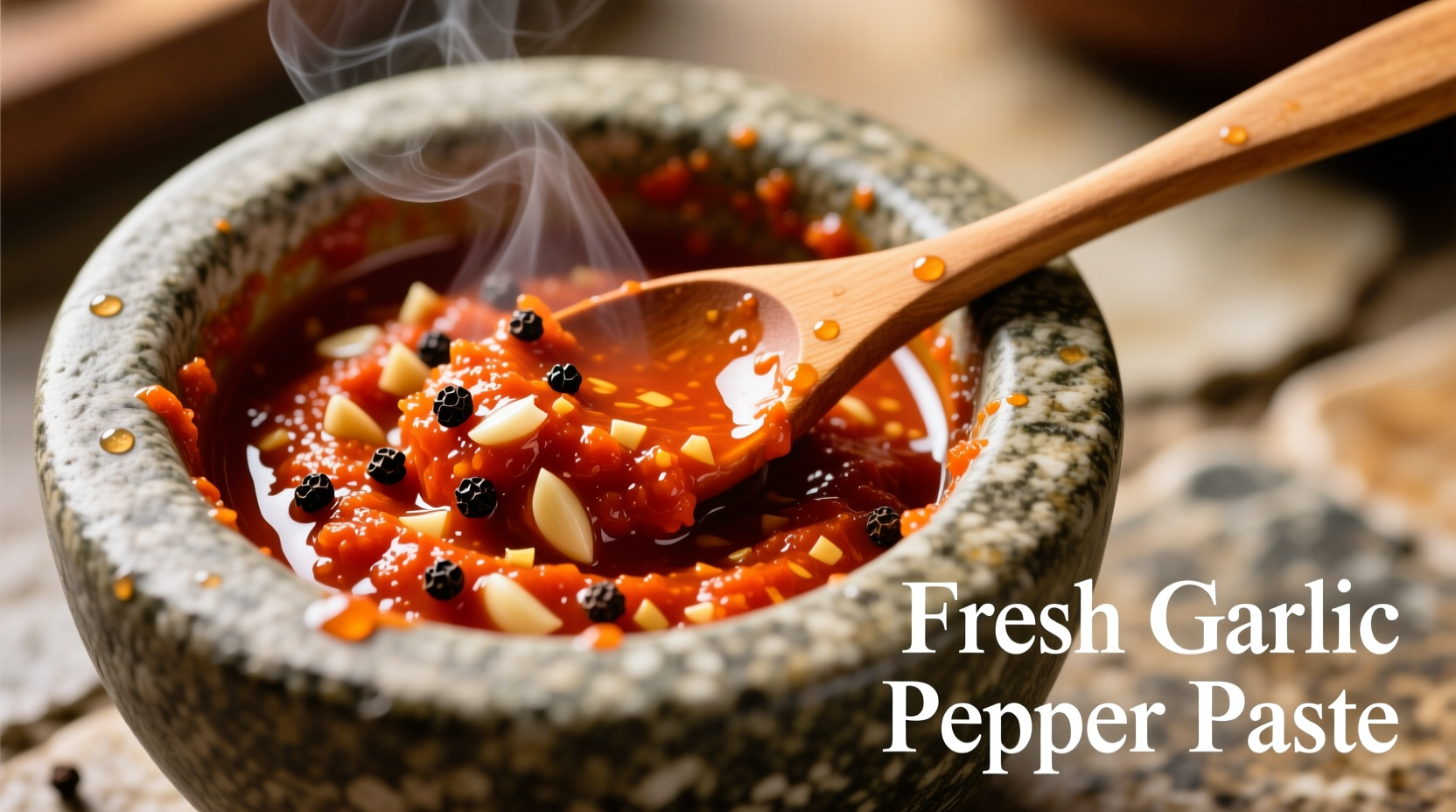Garlic pepper paste combines minced garlic and ground black pepper into a versatile cooking ingredient that enhances flavor while reducing prep time. This ready-to-use paste delivers consistent garlic-pepper flavor in sauces, marinades, and stir-fries, with homemade versions lasting 2-3 weeks refrigerated and commercial varieties up to 6 months unopened.
What Exactly Is Garlic Pepper Paste?
Garlic pepper paste isn't just crushed garlic and pepper mixed together—it's a carefully balanced condiment where garlic's pungent sweetness meets black pepper's complex heat. Unlike pre-minced garlic in jars, quality paste maintains freshness through proper emulsification and pH control. The best versions use a 3:1 ratio of fresh garlic to coarsely ground black pepper, creating a texture that clings to foods rather than separating.
Where Garlic Pepper Paste Shines (And Where It Doesn't)
Understanding context boundaries prevents culinary disappointment. This paste excels in applications where garlic flavor should permeate rather than dominate:
- Perfect matches: Stir-fries, roasted vegetables, compound butters, and tomato-based sauces
- Limited effectiveness: Delicate fish dishes or raw applications like salad dressings (use fresh instead)
- Avoid completely: Dishes requiring distinct garlic cloves like braised meats or whole roasted garlic presentations
Chef Antonio Rodriguez notes: "The paste's convenience comes with flavor trade-offs. It won't give you the roasted garlic sweetness of whole cloves or the bright punch of freshly minced garlic, but it provides remarkable consistency for weeknight cooking."

Evolution of Garlic Pepper Applications
Garlic and pepper have been combined since ancient trade routes connected European pepper markets with Mediterranean garlic cultivation. Modern paste formulations evolved through three key phases:
| Time Period | Preparation Method | Primary Culinary Use |
|---|---|---|
| Pre-1800s | Mortar and pestle grinding | Preservation in olive oil for winter use |
| 1800-1950 | Stone grinding with vinegar | Meat preservation and flavoring |
| 1950-Present | Industrial emulsification | Convenience cooking ingredient |
Make Your Own Superior Garlic Pepper Paste
Commercial versions often contain stabilizers and excess salt. This chef-tested recipe delivers cleaner flavor:
Basic Homemade Version
- 1 cup fresh garlic cloves, peeled
- 1/3 cup coarsely ground black pepper (Tellicherry preferred)
- 2 tbsp neutral oil (avocado or grapeseed)
- 1 tsp citric acid (preserves color)
- Process garlic and pepper in food processor until nearly smooth
- With motor running, slowly add oil until emulsified
- Mix in citric acid and transfer to sterilized jar
- Top with 1/4 inch oil layer before sealing
Refrigerate for up to 21 days. The USDA Food Safety and Inspection Service recommends discarding homemade garlic-in-oil mixtures after 4 weeks due to botulism risk (FSIS guidelines).
Flavor Pairing Guide
Maximize your garlic pepper paste by matching it with complementary ingredients:
| Protein | Best Pairings | Application Tip |
|---|---|---|
| Chicken | Lemon, thyme, mushrooms | Mix 2 tbsp paste with 1/4 cup yogurt for marinade |
| Beef | Worcestershire, smoked paprika | Add 1 tbsp to meatloaf per pound of ground beef |
| Vegetables | Balsamic, Parmesan, olive oil | Toss 1 tsp with roasted vegetables before serving |
Avoid These Common Mistakes
Even experienced cooks make these errors with garlic pepper paste:
- Adding too early: Garlic compounds break down at high heat—add paste during last 5 minutes of cooking
- Overusing: Start with 1/2 tsp per serving; you can always add more but can't remove excess
- Improper storage: Always use clean utensils to prevent bacterial growth in the container
- Misjudging salt content: Many commercial versions contain added salt—taste before seasoning
When Fresh Garlic Works Better
While convenient, garlic pepper paste isn't universally superior. Food science research from the University of California Davis shows that fresh garlic contains allicin—a compound with documented health benefits—that degrades within hours of crushing (UC Davis study). For maximum nutritional benefit, use fresh garlic in raw applications like salad dressings, then reach for the paste when cooking requires convenience.











 浙公网安备
33010002000092号
浙公网安备
33010002000092号 浙B2-20120091-4
浙B2-20120091-4